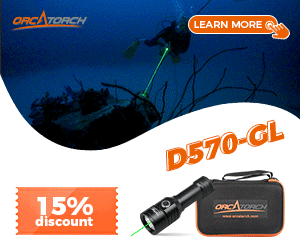SouthernSharktoothDiver
Contributor
Hey all!
So, some context: I do most of my diving in 20-40 ft of high current, low vis water. I have a "buddy" on these dives, but realistically, if we're not using a tether (which we do if things seem risky today, but usually not as it's an entanglement risk) we're unable to readily come to each other's assistance. We remain with depth for a CESA, but frankly I'm not sufficiently confident in my ability to do one of those under these conditions to wager my life on it. For this reason, I have acquired a 19 cu ft aluminum scuba cylinder, which I intend to kit out for use as a redundant air supply.
Now, in order to get my "money's worth" out of the bottle, I'm considering using it as a part of my gas plan to extend my dive time (hence why I've avoided using the term, "Pony bottle" since that refers to a cylinder which is not part of the gas plan). I have planned it out that I would do the first dive of the day as normal, using the 19 ft bottle only in the event of an emergency. Then, for the second dive, I would drain my main bottle until I would normally ascend, then switch over to the small cylinder to finish out the dive. Based on my SAC rate and the amount I'd want to keep in reserve, I think this would buy me about 15 minutes of dive time at my usual depth.
Under this gas plan, I'd always have a fully redundant air supply, but I'd be using both as part of my intended dive. I have seen posts on here which say this is a Very Bad Idea (Tm) and I would like to shop the idea around a find out why. Please note that I'm not requesting advice on how to mount/sling my pony/stage bottle, and while I'm aware many divers believe side mount or independent twins to be preferable, I feel a 19ft pony to be sufficient for my depth, and I don't really want to spend the money on side mount or twins, especially since I don't see a need for such a bulky setup under these conditions. I say all this to try and avoid spawning another thread on pony bottle logistics, which has kind of been beaten to death on this forum.
Anyway, I look forward to getting advice/opinions, thanks in advance!
So, some context: I do most of my diving in 20-40 ft of high current, low vis water. I have a "buddy" on these dives, but realistically, if we're not using a tether (which we do if things seem risky today, but usually not as it's an entanglement risk) we're unable to readily come to each other's assistance. We remain with depth for a CESA, but frankly I'm not sufficiently confident in my ability to do one of those under these conditions to wager my life on it. For this reason, I have acquired a 19 cu ft aluminum scuba cylinder, which I intend to kit out for use as a redundant air supply.
Now, in order to get my "money's worth" out of the bottle, I'm considering using it as a part of my gas plan to extend my dive time (hence why I've avoided using the term, "Pony bottle" since that refers to a cylinder which is not part of the gas plan). I have planned it out that I would do the first dive of the day as normal, using the 19 ft bottle only in the event of an emergency. Then, for the second dive, I would drain my main bottle until I would normally ascend, then switch over to the small cylinder to finish out the dive. Based on my SAC rate and the amount I'd want to keep in reserve, I think this would buy me about 15 minutes of dive time at my usual depth.
Under this gas plan, I'd always have a fully redundant air supply, but I'd be using both as part of my intended dive. I have seen posts on here which say this is a Very Bad Idea (Tm) and I would like to shop the idea around a find out why. Please note that I'm not requesting advice on how to mount/sling my pony/stage bottle, and while I'm aware many divers believe side mount or independent twins to be preferable, I feel a 19ft pony to be sufficient for my depth, and I don't really want to spend the money on side mount or twins, especially since I don't see a need for such a bulky setup under these conditions. I say all this to try and avoid spawning another thread on pony bottle logistics, which has kind of been beaten to death on this forum.
Anyway, I look forward to getting advice/opinions, thanks in advance!



